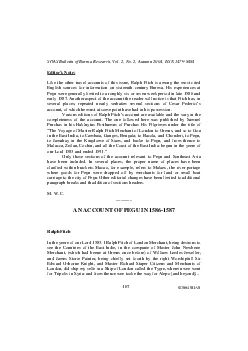PPT-OTOC in MBL systems Dong-Hee
Author : patchick | Published Date : 2020-11-06
Kim Department of Physics and Photon Science Gwangju Institute of Science and Technology QIT2018 Yangpyung 21 Dec 2018 Outline ManyBody Localization
Presentation Embed Code
Download Presentation
Download Presentation The PPT/PDF document "OTOC in MBL systems Dong-Hee" is the property of its rightful owner. Permission is granted to download and print the materials on this website for personal, non-commercial use only, and to display it on your personal computer provided you do not modify the materials and that you retain all copyright notices contained in the materials. By downloading content from our website, you accept the terms of this agreement.
OTOC in MBL systems Dong-Hee: Transcript
Download Rules Of Document
"OTOC in MBL systems Dong-Hee"The content belongs to its owner. You may download and print it for personal use, without modification, and keep all copyright notices. By downloading, you agree to these terms.
Related Documents














